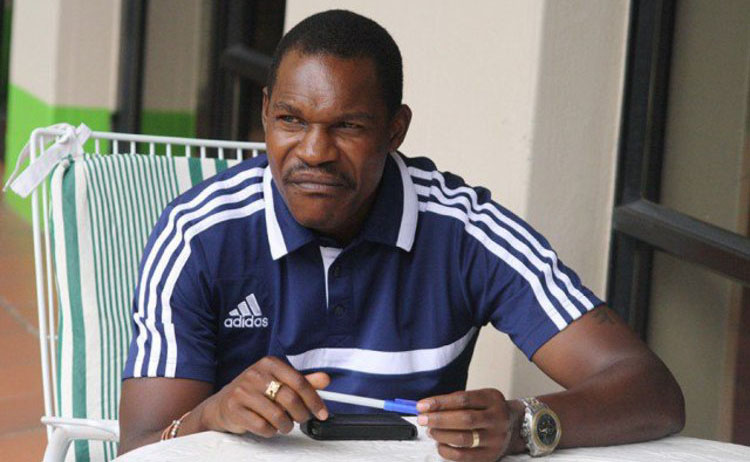Distance to school matters for pupils
Rumbidzayi Ngwenya Features Writer
At a tender age of eight, Natasha (Not her real name) wakes up daily at 5am to prepare for her long trek to school. She stays with her mother in Chitungwiza, a sprawling dormitory town about 35km south of the capital, Harare.
The journey to a private school in the capital is taxing and full of many dangers. She has to jostle with other commuters to get into a kombi or private car. Risks of accidents are high. She has seen a number of accidents that have claimed the lives of other commuting students on the Chitungwiza-Harare road. It’s the pain of having to wake up early and then return home late that eats her heart.
“I’m tired and I need to sleep more,” Natasha yawns as her mother persuades her to get up. “Mum, I want to sleep. Please, I want to sleep. Just give me a little bit more time.”
She has a bag of tricks whenever she doesn’t want to go to school. She will try to tag at her mother’s soft spot.
“My stomach is aching,” she cries. “I don’t want to go to school. I have a headache also.”
And at times, the mother gives in and Natasha does not attend school. Many stories abound of the life of commuting learners. Many of them must deal with violence, crime and accidents almost on daily basis.
Many say they have been robbed of their bus fare and school bags while others say they have been assaulted on the way to or from school. Kombi drivers also harass them. Part of the problem is transportation. In Zimbabwe, there are no longer public school buses.
Private school buses cost more and most poor parents are forced to send their kids using shared vans or kombis while many are left to walk, often long distances, to get to school.
Many of the learners, particularly girls, are also exposed to sexual abuse when they travel long distances to school. Some even claim indecent exposure to foul language in kombis. All this presents numerous problems to the commuting learners.
Education experts say it is important for parents to factor the distances their children cover daily to and from school, whether by car or on foot. Numerous studies both international and local show that long journeys to school have a negative impact on students’ health and their education achievement levels.
“The issue of taking students to far away schools strains them. In most cases, these children spend the whole day at school. In local Government schools there is hot sitting which gives a child enough time to rest. It also allows them to concentrate better in school. But for schools without hot sitting, it can be punitive for the learners,” said Maxwell Rafomoyo, an activist at the Education Coalition in Zimbabwe.
Experts say very little is being done to address the impact of long travel hours, to and from schools, on students’ health and learning abilities. They suggest that sitting in a car or a bus for up to three hours per day is not rare, and tires a child’s body more than an adult’s. Many bemoan that long distances cause fatigue, which kills a learner’s concentration.
“Some of them arrive at school sweaty, stressed and exhausted both physically and psychologically, which compromises their performance,” a school teacher said.
Many students who travel long distances are more likely to get to school late and miss an entire lesson or the introductory part of it which affects their overall learning in the long run, another expert said.. For day scholars, it’s worse and reports of absenteeism abound.
“Thoughts about how distant it is to get to school keep running in children’s mind whenever they wake up. This, coupled with the pile of homework assignments, demoralises them,” said one teacher.
In Zimbabwe, most parents hold perceptions that schools in high density suburbs or rural areas do not provide the quality of education they deem necessary for their children. Many have resorted to sending their children to private and former Group A schools in Harare and other towns where they think there is better infrastructure and education.
“It is just a perception but group B schools are also producing quality students with the resources that they have. We have good pass rates and good enrolment. High schools like Harare High did exceptionally well last year which is a sign that there is provision of good education,” said Secretary for Primary and Secondary Education Dr Sylvia Utete-Masango.
“Maybe parents could talk about convenience since they will also be working in town, but otherwise education standards in local Government schools are improving.”
Mission schools in rural areas produce the best results every year despite having poor infrastructure. The Education Act of 1979 regulated access to each type of school through a zoning system based on residency. Schools were classified into three groups — Government, Community and Private schools.
Government schools were again divided into three types: Group A, B and C with the first reserved for whites in affluent suburbs while Group B and C schools had fewer resources, less funding and qualified teachers. This division still persists but is not a measure of school performance any more.
“The rise in the number of children commuting into town everyday is caused by parents’ opinion that better education is attained in private schools yet Government schools within their locality are doing well in terms of pass rates,” Dr Utete-Masango said.
“Schools do not have much distinction imposed by location; parents have biases in their minds but their child may stand to benefit more when they learn within their locality.”
Sending children to schools close to their homes helps to develop them over time.
“The importance of zoning is that parents can develop local schools. When they take their children to town they keep developing those schools and their local schools remain underdeveloped,” said Rafamoyo.
“As it stands, Government is doing a lot to ensure that there is continued improvement in education standards, but with about 2 056 schools in Zimbabwe, it cannot be done in a short period of time. It requires time and more exploration of funding sources. Although the Government has funding at the moment, the gap is too wide.”
Concurred Zimbabwe Teachers’ Association (Zimta) president Richard Gundane: “Zoning also seeks to address many dangers that are associated with travelling such as accidents which are reduced when students attend local schools.
“The bias towards certain schools has a background entrenched in the country’s unfortunate encounter with colonialism. The reason behind this is historical. Group A and most private schools are deemed to be better equipped compared to group B schools so it is understandable that parents would want to take their children to a better equipped schools.”
Experts also note however, that attitudes and biases become part of a self-fulfilling prophesy. As parents pay more fees at private schools, the schools tend to access better resources such as most experienced and better qualified teachers and up to date books. However, high density schools are producing good results.
Last year, Glen View 2 Primary and Secondary Schools won the coveted Secretary’s Merit Award, which is the highest academic honour conferred on schools that have produced good results. The schools beat many in the former Group A category.
“In other words they are the best primary and secondary schools across the Harare Metropolitan Province. So it does not make sense for parents to take their children from such schools to town. Parents need to be better informed when they are looking for schools for their children,” said Gundane.
Other experts argue that distance doesn’t matter. They say the learners’ commitment and hunger for knowledge are key.
“Student performance largely depends on their effort,” said one University of Zimbabwe lecturer. “Serious students will always pass despite the distance. They always adjust and cope.”
Most educational experts say there is need for the Government to invest more in the development of infrastructure in all its schools, to improve working conditions for teachers and access to learning materials, to raise the quality of education.
They argue that funding for most public schools is still inadequate. This has forced many parents to send their children to private schools which in most cases are failing to maintain quality educational standards. Staffing levels are poor at most schools and this has led to a high teacher-student ratio. Most schools have 60 students in a class.
“For better education in the country, more resources are needed in Government schools and facilities should be renewed to reduce high teacher-pupil ratio,” Mr Gundane said.
Government schools are generally poorly funded considering that more than 95 percent of education funding goes towards salaries and very little remains for infrastructure development and learning materials. Natasha could easily avoid this long and treacherous distance to school, if all this were addressed. She could attend a less prestigious primary school much closer to her home but still achieve her goals.











Comments